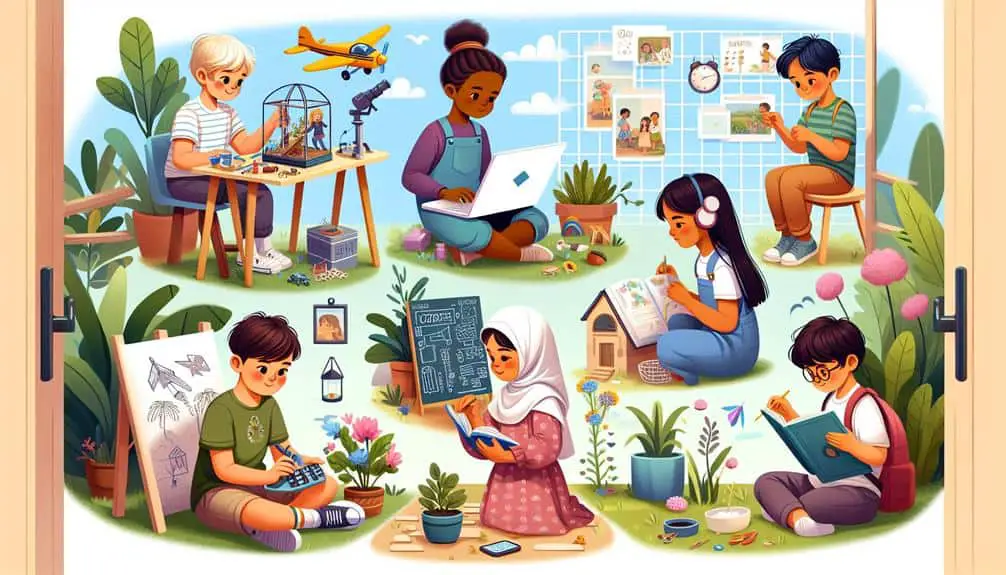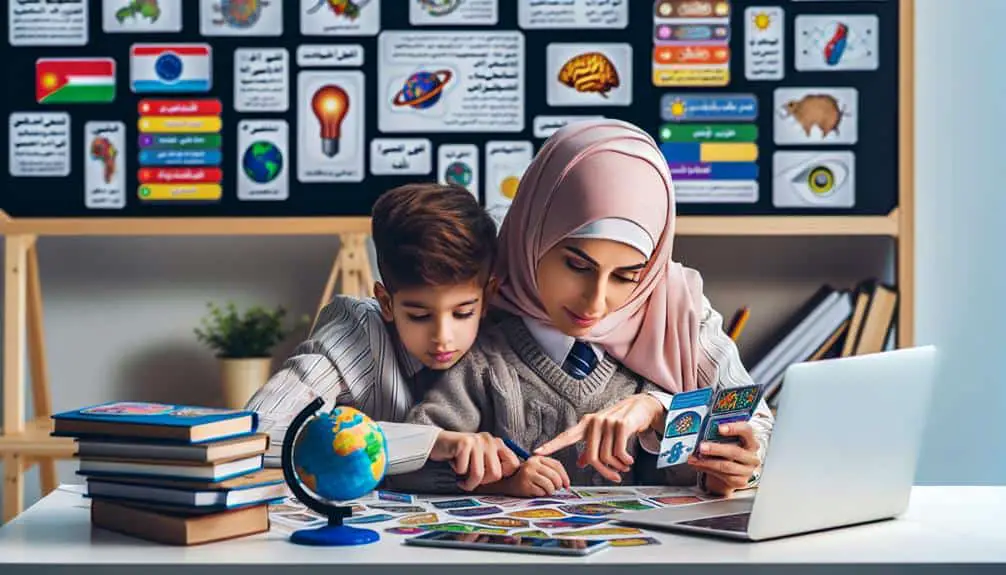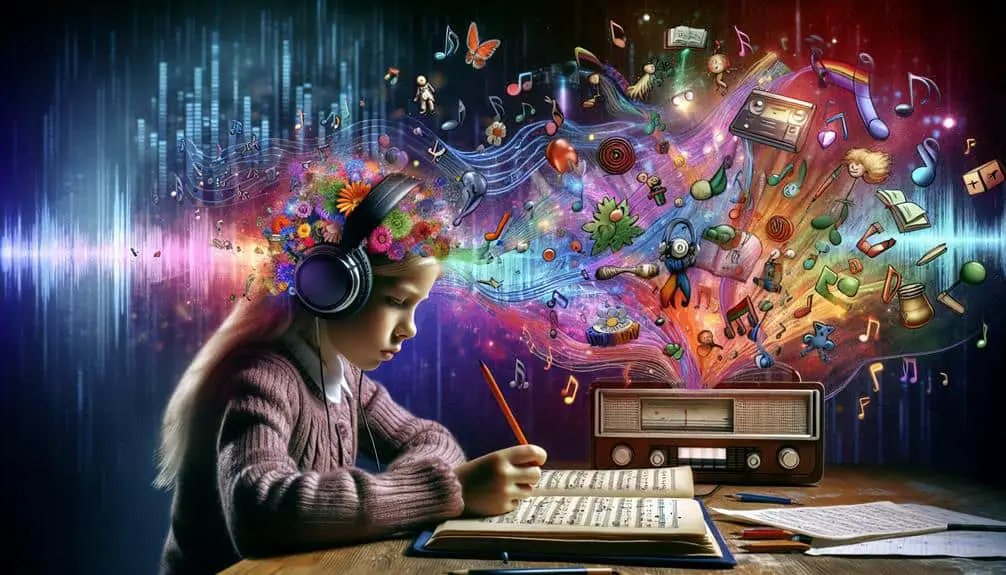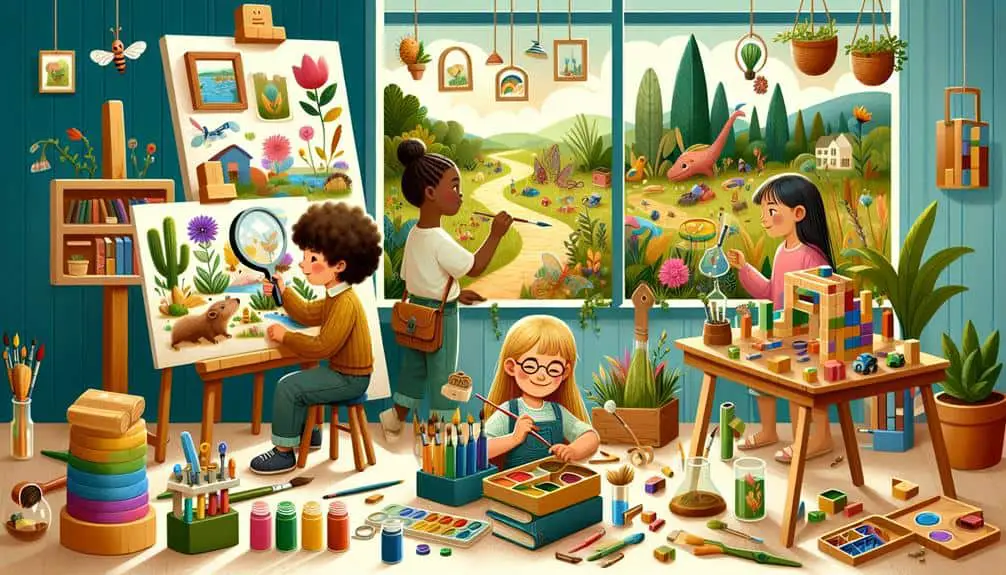To optimize homeschooling diversity, adapt to individual learning styles. Visual learners excel with charts and visuals. Include colorful illustrations and educational videos for them. Kinesthetic learners thrive with hands-on activities and field trips. Engage them with movement-based tasks and science experiments. Use multisensory techniques with activities stimulating multiple senses. Incorporate visual aids, tactile experiences, and kinesthetic tasks like manipulatives. Personalize instruction by evaluating learning styles and setting individual goals. Offer varied materials for different styles and foster a collaborative learning environment. Technology enhances learning too. Interactive platforms, personalized feedback, and multimedia resources cater to various styles. Find out more about maximizing educational experiences in homeschooling.
Key Points
- Utilize visual aids and colorful illustrations for visual learners.
- Incorporate hands-on activities and experiments for kinesthetic learners.
- Conduct learning style assessments to customize teaching.
- Foster collaborative learning opportunities for diverse engagement.
- Implement technology for personalized and interactive learning experiences.
Understanding Learning Style Preferences
Understanding your child's learning style preferences can greatly enhance your homeschooling experience by tailoring education to their individual needs and strengths.
Visual learners thrive on information presented in charts, diagrams, and visual aids. Incorporating colorful illustrations, mind maps, and educational videos can help them grasp concepts more effectively.
For kinesthetic learners, hands-on activities, experiments, and field trips are key to their learning. Encourage them to engage in activities that involve movement, such as acting out historical events or conducting science experiments.
Implementing Multisensory Approaches
When implementing multisensory approaches in your homeschooling curriculum, consider incorporating activities that engage multiple senses to enhance your child's learning experience. Hands-on engagement and visual aids are effective tools to stimulate different sensory channels simultaneously. Activities like building models, conducting experiments, or using flashcards can help solidify concepts by linking visual information with tactile experiences.
Kinesthetic activities, such as acting out historical events or using manipulatives for math problems, cater to learners who benefit from physical movement in their learning process. These activities not only engage the sense of touch but also reinforce learning through muscle memory and physical engagement.
Incorporating auditory resources like educational podcasts, music, or audiobooks can also enrich your child's learning journey by appealing to their auditory senses. Listening to stories, discussions, or educational songs can help reinforce concepts and improve retention through sound-based learning.
Embracing Individualized Instruction Methods
To optimize your homeschooling experience, tailor your instruction methods to suit the unique learning preferences and pace of each individual child. Personalized teaching and differentiated instruction are key to helping your children thrive in their educational journey. Here are five practical ways to embrace individualized instruction methods:
- Conduct Learning Style Assessments: Identify how each child learns best – whether auditory, visual, kinesthetic, or a combination – to customize your teaching approach.
- Set Individual Learning Goals: Work with each child to establish personalized learning objectives based on their strengths, weaknesses, and interests.
- Offer Varied Instructional Materials: Provide a mix of resources such as textbooks, online tools, hands-on activities, and educational games to cater to different learning styles.
- Encourage Self-Paced Learning: Allow children to progress at their own speed, providing extra support or challenges as needed.
- Provide Regular Feedback: Offer constructive feedback tailored to each child's learning style to enhance understanding and motivation.
Fostering Collaborative Learning Opportunities
In order to cultivate a dynamic and engaging learning environment, consider fostering collaborative opportunities that encourage interaction and knowledge sharing among your homeschooling students. Peer collaboration and group projects are excellent ways to enhance the learning experience for your students. By working together on tasks and projects, students can benefit from each other's strengths, perspectives, and ideas.
Implementing group projects allows students to develop essential skills such as teamwork, communication, and problem-solving. It also provides them with the opportunity to learn from one another and gain new insights. Encouraging peer collaboration fosters a sense of community within your homeschooling environment and promotes a supportive learning atmosphere.
When assigning group projects, make sure that each student has a defined role and responsibilities within the group. This helps in promoting accountability and ensures that everyone contributes to the project. Additionally, provide guidance and support to help students navigate any challenges they may face while working collaboratively. By fostering collaborative learning opportunities, you create a rich and stimulating educational experience for your homeschooling students.
Leveraging Technology for Varied Learning Styles
How can technology be effectively utilized to cater to the diverse learning styles of homeschooling students? Leveraging technology can be a powerful tool in accommodating various learning preferences and needs. Here are some strategies to explore:
- Interactive Platforms: Utilize online platforms that offer interactive features such as virtual labs, educational games, and simulations to engage students with different learning styles.
- Personalized Feedback: Use online tools that provide personalized feedback on assignments and assessments, catering to individual strengths and areas for improvement.
- Multimedia Resources: Incorporate a variety of multimedia resources like videos, podcasts, and infographics to appeal to visual and auditory learners.
- Adaptive Learning Programs: Implement adaptive learning software that adjusts the pace and difficulty of lessons based on each student's progress and comprehension.
- Virtual Field Trips: Take advantage of virtual field trip opportunities to provide experiential learning for kinesthetic and visual-spatial learners.




